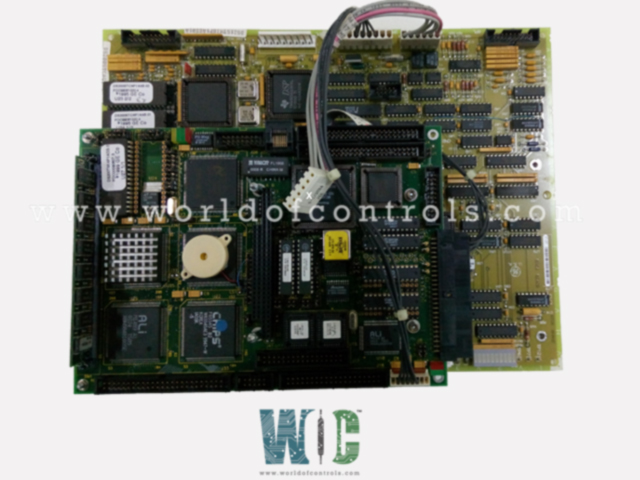
World Of Controls understands the criticality of your requirement and works towards reducing the lead time as much as possible.
DS200STCAG1AAA - Turbine Communication Board is available in stock which ships the same day.
DS200STCAG1AAA - Turbine Communication Board comes in UNUSED as well as REBUILT condition.
To avail our best deals for DS200STCAG1AAA - Turbine Communication Board, contact us and we will get back to you within 24 hours.
SPECIFICATIONS:
Part Number: DS200STCAG1AAA
Manufacturer: General Electric
Series: Mark V LM
Product Type: Turbine Communication Board
Operating System: QNX
Power Requirements: +5 V dc, 6 A
Number of input channels: 12
Number of outputs: 125 V dc
Trip Solenoid Rating: 125 V dc
Power supply voltage: 28 V dc
Input Voltage: 12 V dc
Mounting Type: Chassis Mount
Technology: Surface mount
Operating temperature: 40 to 85°C
Size: 33.0 cm x 17.8 cm
Repair: 3-7 Day
Availability: In Stock
Country of Origin: United States
Manual: GEH-6153
FUNCTIONAL DESCRIPTION:
DS200STCAG1AAA is a Turbine Communication Board manufactured and designed by General Electric as part of the Mark V LM Series used in GE Speedtronic Control Systems. The Turbine Communication Board (STCA) functions as the IONET master for the I/O cores. Each of the I/O cores has an STCA board. Signals are read through the various connectors, conditioned, and written to the I/O Engine located on the UCPB daughterboard via the bus connectors J1 and J3. The signals are written to the COREBUS connections located on the QTBA or CTBA boards via the JEE connector.
STCA CONFIGURATION:
Hardware: Hardware jumper JP2 enables the test points for factory testing. Hardware jumper JP4 selects the voltage needed for the flash EPROM. Refer to Appendix A and the hardware jumper screen on the operator interface for information on the hardware jumper settings for this board.
Software: I/O configuration constants for the pulse rate inputs, compressor stall detector,, and synchronization settings are entered in the I/O Configuration Editor on the operator interface as described below.
STCA PULSE RATE INPUT CIRCUIT:
The STCA board scales and conditions the pulse rate inputs read from the TCQC board. These signals originate from magnetic pickup devices whose signals are written to the TCQC board by the QTBA, TBQB, and/or PTBA terminal boards. The
STCA SYNCH CHECK CIRCUIT:
The generator and bus voltage inputs are read from the TCQC board via the 19PL connector. These signals originate on the PTBA terminal board in the
WOC has the largest stock of OEM replacement parts for GE Speedtronic Gas Turbine Control Systems. We can also repair your faulty boards and supply unused and rebuilt boards backed up with a warranty. Our team of experts is available round the clock to support your OEM needs. Our team of experts at WOC is happy to assist you with any of your automation requirements. For pricing and availability on parts and repairs, kindly contact our team by phone or email.
What is a Turbine Communication Board?
A Turbine Communication Board is a critical component in turbine control systems like GE Speedtronic. It facilitates communication between the I/O cores and the control system by managing signal inputs and outputs.
What are I/O cores in a turbine control system?
I/O cores (Input/Output cores) are the parts of a turbine control system responsible for handling the input and output signals. These signals include turbine speed, pressure readings, and temperature data, which are essential for operating and monitoring the turbine.
What is the function of the pulse rate input in turbine control boards?
Pulse rate inputs measure the rotational speed of the turbine shafts using signals from magnetic pickups. The turbine communication board conditions these signals to monitor and control turbine speed.